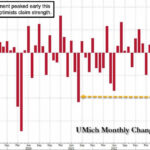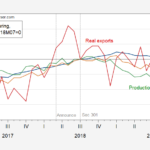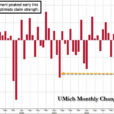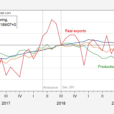
from the Congressional Budget Office
The federal government ran a budget deficit of $668 billion in fiscal year 2017, CBO estimates – $82 billion greater than the previous year’s shortfall. The Treasury Department will report the actual deficit for the year later this month.

The federal government ran a budget deficit of $668 billion in fiscal year 2017, CBO estimates—$82 billion greater than the shortfall recorded in fiscal year 2016. If not for the shift of certain payments from October to September in both 2016 and 2017 (because the first day of the month fell on a weekend), the deficit would have increased by $121 billion in 2017 (mostly because 2016 outlays would have been smaller).
The 2017 deficit equaled an estimated 3.5 percent of gross domestic product (GDP), up from 3.2 percent in 2016. Fiscal year 2017 was the second consecutive year in which the deficit increased as a percentage of GDP.
By CBO’s estimate, revenues were 1 percent higher and outlays were about 3 percent higher in 2017 than they were in the previous fiscal year. CBO’s estimates are based on data from the Daily Treasury Statements issued by the Department of the Treasury; the department will report the actual deficit for fiscal year 2017 later this month.
A deficit of $668 billion would be about $25 billion smaller than the shortfall that CBO projected in its
June 2017 report, An Update to the Budget and Economic Outlook: 2017 to 2027, largely because outlays were less than CBO anticipated.
Total Receipts: Up by 1 Percent in Fiscal Year 2017
Receipts totaled $3,314 billion in fiscal year 2017, CBO estimates—$47 billion more than they did in fiscal year 2016. That relatively small increase reflects the following changes:
- Amounts withheld from workers’ paychecks rose by $111 billion (or 5 percent). That change largely reflects increases in wages and salaries.
- Nonwithheld payments of income and payroll taxes fell by $9 billion (or 2 percent). Much of that decline occurred in April, when taxpayers’ final payments for 2016 were lower than their final payments of taxes for 2015.
- Individual income tax refunds rose by $11 billion (or 4 percent), further reducing net receipts.
- Receipts from unemployment insurance taxes (one kind of payroll tax) declined by $3 billion (or 6 percent).
- Remittances from the Federal Reserve to the Treasury fell by $34 billion, most significantly because the Fixing America’s Surface Transportation Act (Public Law 114-94) required the Federal Reserve to remit most of its surplus account to the Treasury in fiscal year 2016. The central bank remitted the required amount, $19 billion, in a onetime payment in late December 2015. Remittances to the Treasury also were lower this year because short-term interest rates were higher, leading the central bank to pay depository institutions more interest on reserves.
- Excise taxes declined by $11 billion (or 12 percent) because of a one-year moratorium in 2017 on a tax on health insurance providers that had begun to be collected in 2014.
- Fees and fines rose by $7 billion, partly as a result of larger-than-usual miscellaneous penalty payments.














